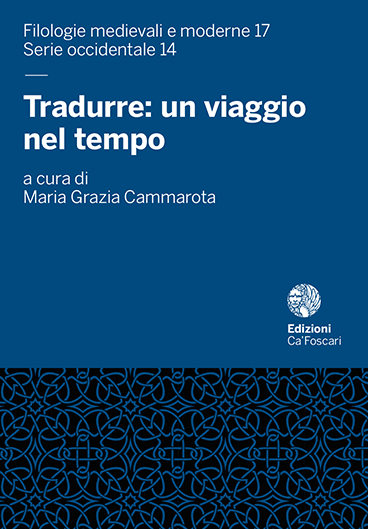Series |
Medieval and Modern Philologies
Volume 17 | Review | Translating: A Journey in Time
Translating: A Journey in Time
open access | peer reviewed-
edited by
- Maria Grazia Cammarota - Università degli Studi di Bergamo, Italia - email orcid profile
Abstract
The translation of a text belonging to a culturally distant age is like a journey across time: relying on the guidance of a translator, the new readers can delve into the past and explore a world that otherwise would remain accessible only to a restricted number of experts. Through examples from medieval Germanic texts, the papers collected in this volume offer significant insights into the specific role played by philology in the field of ‘intertemporal translation’, thus casting light on the central function, especially in the current cultural situation, of a discipline that values the ability of ‘reading slowly’ and a respectful approach towards the datum.
Keywords Translation Studies • Landslov • Old and Middle High German • Beowulf • Aristocratic Identity • Old Icelandic literature • The Wife’s Lament • Fornaldarsögur • Genre • Intertemporal Translation • R • Rewriting • John Porter • Medieval German Literature • Anglo-Saxon England • Transcodification • Chancey Brewster Tinker • Verba seniorum • Kingship • Courtly Ideology • Old English • Exile • Ovid’s Metamorphoses • William Morris • Albrecht von Halberstadt • Áns saga bogsveigis • Literal or figurative • Translation Theory • Ælfric of Eynsham • Hermann of Thuringia • Old Norse • Legal translation • Theory and practice of translation • Translation practice • Editorial work • Tolkien • Medieval Sweden • Translation • Hwæt-hypotheses • J • Law • Soul-and-body literature • Seamus Heaney • Old Norwegian
Permalink http://doi.org/10.30687/978-88-6969-248-2 | e-ISBN 978-88-6969-248-2 | ISBN (PRINT) 978-88-6969-250-5 | Published May 24, 2018 | Language it, en
Copyright © 2018 Maria Grazia Cammarota. This is an open-access work distributed under the terms of the Creative Commons Attribution License (CC BY). The use, distribution or reproduction is permitted, provided that the original author(s) and the copyright owner(s) are credited and that the original publication is cited, in accordance with accepted academic practice. The license allows for commercial use. No use, distribution or reproduction is permitted which does not comply with these terms.
Chapters
- Introduzione
- May 24, 2018
-
Dall’altra parte della cattedra
Sono utili i Translation Studies per la pratica della traduzione? - May 24, 2018
-
Translating Medieval Texts
Common Issues and Specific Challenges - May 24, 2018
-
L’arrivo di Grendel a Heorot
Riflessioni su alcune scelte traduttive in lingua inglese (Morris, Tinker, Tolkien, Heaney e Porter) - May 24, 2018
-
Swā hwæt?
Percorsi interpretativi e scelte traduttive di una ‘parola fantasma’ - May 24, 2018
-
sīþ, wræcsīþ: Literal or Figurative?
Considerations on Genre and Gender Conventions in Translating from Old English - May 24, 2018
-
Translating Medieval Icelandic Sagas
Re-bending the Bow of Án the Archer - May 24, 2018
-
Perspectives on Translating Medieval Law
The Norwegian Landslov of 1274 - May 24, 2018
-
Translating the Fate of the Soul in Late Anglo-Saxon England
Ælfric of Eynsham and Two Post-Mortem Visions - May 24, 2018
-
Miti e metamorfosi
Ovidio nella riscrittura di Albrecht von Halberstadt - May 24, 2018
